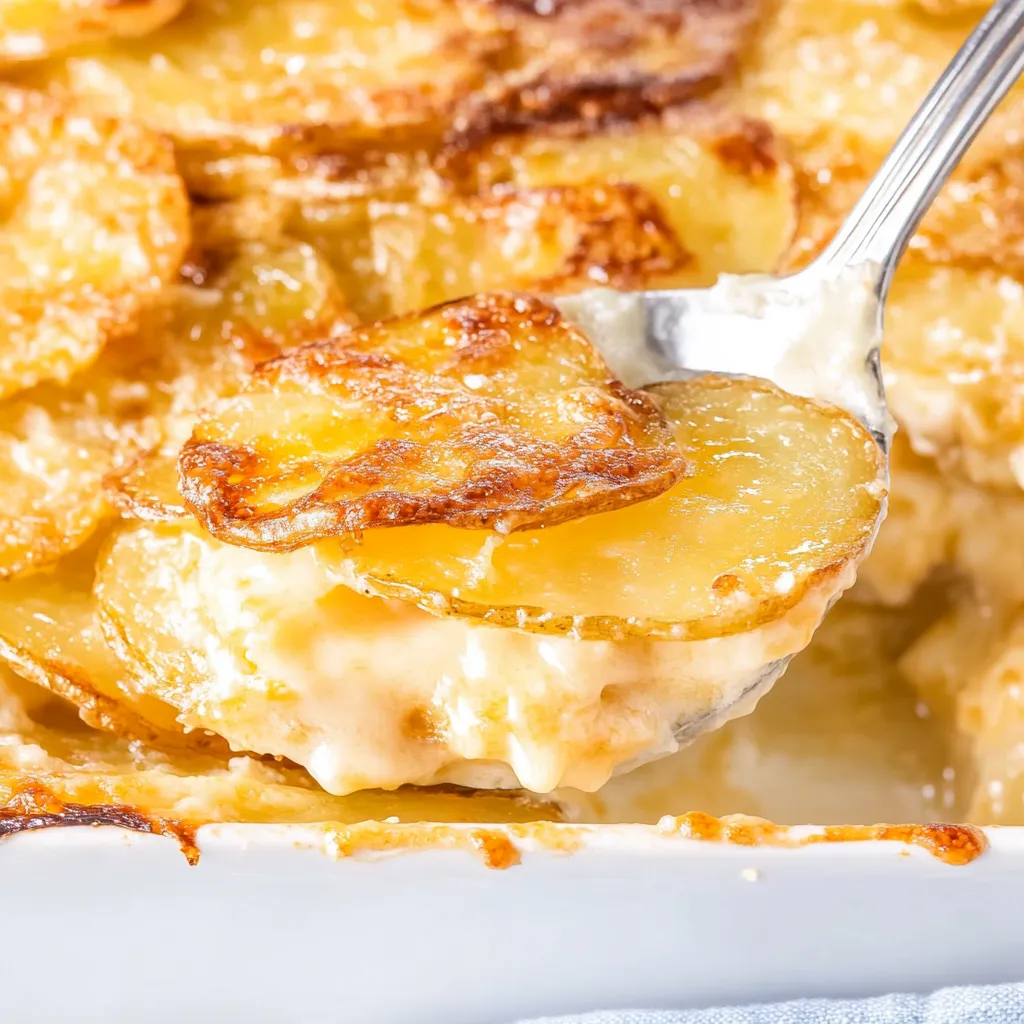Watching my Swiss grandmother grate potatoes for rösti was magical. Her hands moved with precision, turning simple ingredients into a golden, crispy masterpiece. This dish is more than just potatoes; it’s a cultural experience that connects generations and celebrates Alpine cuisine.
Swiss potato recipes are not just about food; they’re about simplicity, skill, and pride. Potatoes have been a staple in Switzerland, telling stories of resilience and flavor. This guide will show you how to make authentic Swiss potato dishes, taking you straight to the Swiss Alps.
Key Takeaways
- Discover the authentic technique behind traditional Swiss potato cooking
- Learn the cultural significance of rösti in Swiss cuisine
- Understand regional variations of potato dishes across Switzerland
- Master the art of creating perfect crispy potato preparations
- Explore the rich culinary heritage behind simple ingredients
Introduction to Swiss Potato Cuisine
In Swiss cooking, potatoes are a big deal. Yes, Switzerland is known for its potatoes! These simple tubers have turned Swiss food into a world of tasty dishes. They show off the country’s rich cultural background.
Origins of Swiss Potato Dishes
Potatoes came to Switzerland in the 1600s. They became a key food for people living in the mountains. Farmers found that potatoes grew well in tough mountain areas. Families then made clever recipes to get through cold winters.
- Introduced in the late 1600s
- Quickly adapted by mountain communities
- Became a critical food source for survival
Cultural Significance in Swiss Gastronomy
Swiss potato dishes are more than just food. They show the country’s creativity and cleverness. From rösti to fancy potato dishes, these recipes share stories of local innovation and pride.
“Potatoes are not just food in Switzerland; they are a culinary tradition passed through generations.” – Swiss Food Historian
Regional Variations Across Switzerland
Switzerland’s different areas have their own potato dishes. German-speaking cantons love crispy rösti. Swiss-French areas prefer creamy potato gratins. Each place adds its own special twist to potato cooking.
- German-Swiss regions: Crispy rösti
- French-Swiss areas: Creamy potato dishes
- Alpine communities: Robust, warming recipes
Essential Ingredients for Swiss Potatoes
Exploring Swiss potato cuisine means knowing the key ingredients. In Swiss German, Kartoffel is the word for potato. It’s key in many traditional recipes. Choosing the right potatoes is essential for authentic Swiss dishes.
For Swiss potato recipes, pick potatoes with specific traits. The best potatoes for Swiss cooking have:
- Firm texture that holds shape during cooking
- Low moisture content
- Waxy or all-purpose potato varieties
“The secret to perfect Swiss potato dishes lies in choosing the right potato variety.” – Swiss Culinary Experts
But there’s more than just potatoes. You’ll need other key ingredients for authentic Swiss potato dishes:
- High-quality butter
- Fresh Alpine cheese
- Sea salt
- Freshly ground black pepper
- Herbs like chives or parsley
Your Swiss potato journey starts with these basic ingredients. The Swiss German term Kartoffel is more than a potato. It’s a tradition of Alpine cooking passed down through generations.
Traditional Swiss Potato Preparation Methods
Learning how to make Swiss potato dishes is essential for authentic flavors like rösti. It takes careful steps and special techniques to turn potatoes into delicious meals.
Every step in Swiss potato cooking is important. From picking the right potatoes to mastering grating, you’ll learn the secrets of Swiss recipes.
Proper Potato Selection Tips
Choosing the right potatoes is key for a true rösti. Look for these traits:
- Firm, waxy potatoes with low moisture
- Varieties like Yukon Gold or Yellow Finn
- Potatoes that keep their shape when cooked
Pre-cooking Techniques
Prepare your potatoes with care for the best results:
- Boil potatoes with skin on the day before
- Refrigerate overnight to reduce moisture
- Peel and store in a cool, dry place
Grating and Shredding Methods
The key to a great rösti is your grating method. Use a box grater or food processor for even strands. Pro tip: Grate potatoes onto a clean towel to drain excess liquid.
“In Switzerland, potato preparation is an art form passed down through generations” – Swiss Culinary Tradition
By using these traditional methods, you’ll make a Swiss potato dish that truly captures Alpine cuisine’s essence.
Classic Rösti: The National Potato Dish
Rösti is the heart of Swiss Alpine cuisine. It’s more than a potato recipe; it’s a cultural icon. It shows the Swiss culinary tradition.
Rösti started in Switzerland’s rural farming areas. It was a hearty breakfast for farmers needing energy. Now, it’s a national favorite, loved by all.
“Rösti is not just food, it’s a piece of Swiss heritage on a plate.”
Making perfect rösti needs skill and detail. Here’s what makes an authentic Swiss rösti:
- Use starchy, firm potatoes like Désirée or Bintje
- Grate potatoes coarsely with traditional hand graters
- Ensure potatoes are well-drained to achieve crispiness
- Cook in a cast-iron skillet for optimal golden-brown crust
Switzerland has many rösti variations. Each region adds its own twist. Some add bacon, cheese, or herbs, while others stick to potatoes, salt, and butter.
Chefs in Switzerland focus on the perfect texture. They aim for a crispy outside and a tender inside. Making rösti is a labor of love, requiring patience and practice.
Swiss Potatoes: Alpine-Style Cooking Techniques
Exploring if Switzerland is known for potatoes? You’ll find that Swiss Alpine areas have amazing cooking methods. These methods turn simple potatoes into delicious dishes. It shows Switzerland’s deep love for food.
Learning Swiss potato cooking needs skill and knowledge of old methods. These ways make potatoes into a tasty dish loved in Swiss homes.
Temperature Control Guidelines
Keeping the right temperature is key for Swiss potato dishes. Here’s what to do:
- Start with medium-high heat for initial cooking
- Reduce temperature to prevent burning
- Maintain consistent heat distribution
Selecting the Perfect Pan
Your choice of pan is crucial for a traditional Swiss potato recipe. Cast iron skillets are best because they:
- Evenly distribute heat
- Keep heat well
- Are naturally non-stick
Expert Flipping Techniques
“The art of turning potatoes is as important as the ingredients themselves.” – Swiss Culinary Tradition
Flipping Swiss potato dishes needs care. Use a wide spatula and move smoothly. This way, you get a golden, crispy outside without breaking the potato cake.
By learning these Alpine-style cooking methods, you can make ordinary potatoes into a special Swiss dish.
Authentic Swiss Potato Side Dishes
Swiss cuisine has a wide range of potato-based side dishes. These dishes make your meals special. You might wonder why they’re called funeral potatoes, but Swiss sides have their own stories.
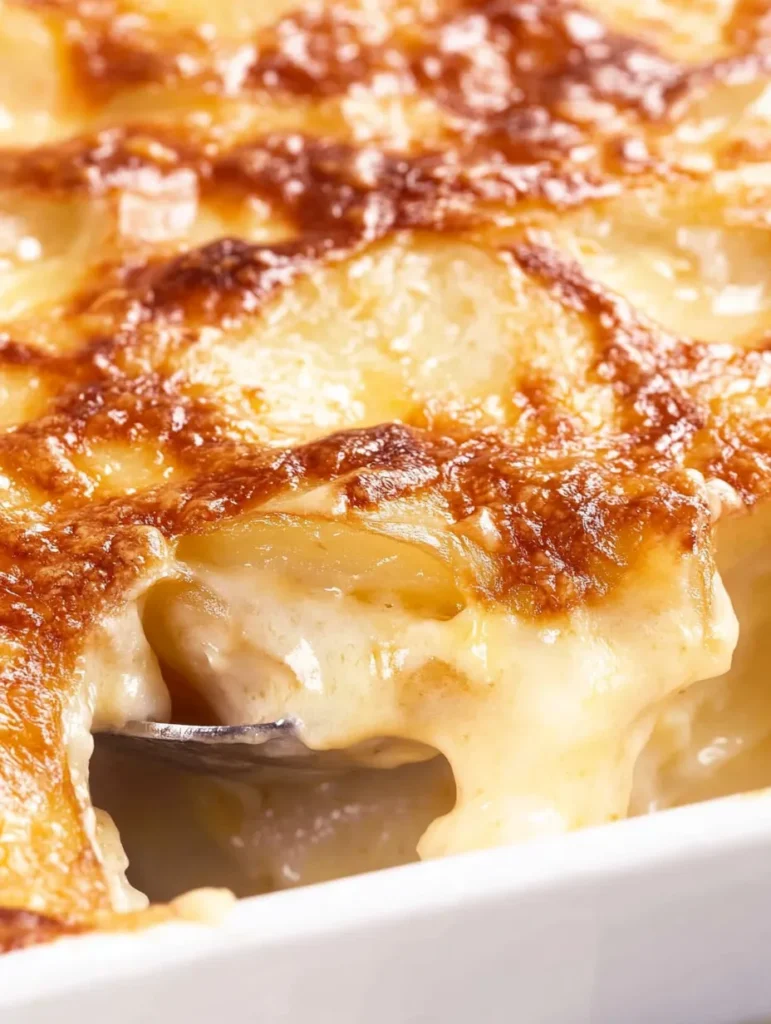
Here are some traditional Swiss potato sides that add flavor and comfort to your meals:
- Älplermagronen: A hearty Alpine macaroni and cheese with potatoes that combines rustic mountain cooking traditions
- Kartoffelstock: Creamy Swiss-style mashed potatoes with a silky smooth texture
- Gschwellti: Simple boiled potatoes served with aromatic Swiss cheese
Each dish has its own story of Swiss farming and cooking traditions. Potatoes in Swiss cuisine are incredibly versatile. They allow for many different ways of cooking and serving.
“Potatoes are not just food in Switzerland; they’re a culinary tradition passed through generations.” – Swiss Culinary Expert
Funeral potatoes might not seem related to Swiss cuisine at first. But they share a similar idea. They’re about making hearty, satisfying dishes that bring people together.
Exploring Swiss potato side dishes will make your cooking better. It will give you a real taste of Alpine culinary traditions.
Common Mistakes to Avoid When Cooking Swiss Potatoes
Mastering Swiss potato dishes takes skill and attention to detail. Switzerland is famous for its potatoes, but many home cooks face challenges. Knowing common mistakes can help you make authentic Swiss potato dishes that impress.
When cooking Swiss potatoes, several mistakes can ruin your dish. Let’s look at the most common challenges you might face.
Temperature Management Challenges
Cooking Swiss potatoes needs precise temperature control. Here are some common mistakes to avoid:
- Cooking at too high heat, which burns the exterior
- Using low temperatures that prevent proper crisping
- Inconsistent pan temperature during preparation
Moisture Control Difficulties
Too much moisture can ruin the texture of Swiss potato dishes. Here are some tips for managing moisture:
- Thoroughly dry potatoes after washing
- Use a clean kitchen towel to remove excess water
- Grate potatoes just before cooking to maintain dryness
Seasoning Nuances
Seasoning is key in Swiss potato dishes. Here are some important tips:
- Use salt sparingly to enhance natural potato flavor
- Experiment with fresh herbs for authentic Swiss taste
- Avoid overwhelming the potato’s delicate flavor profile
“Perfect Swiss potato dishes are about balance, not complexity.”
By understanding and avoiding these common mistakes, you’ll improve your Swiss potato cooking skills. You’ll create dishes that everyone will remember.
Serving Suggestions and Pairings
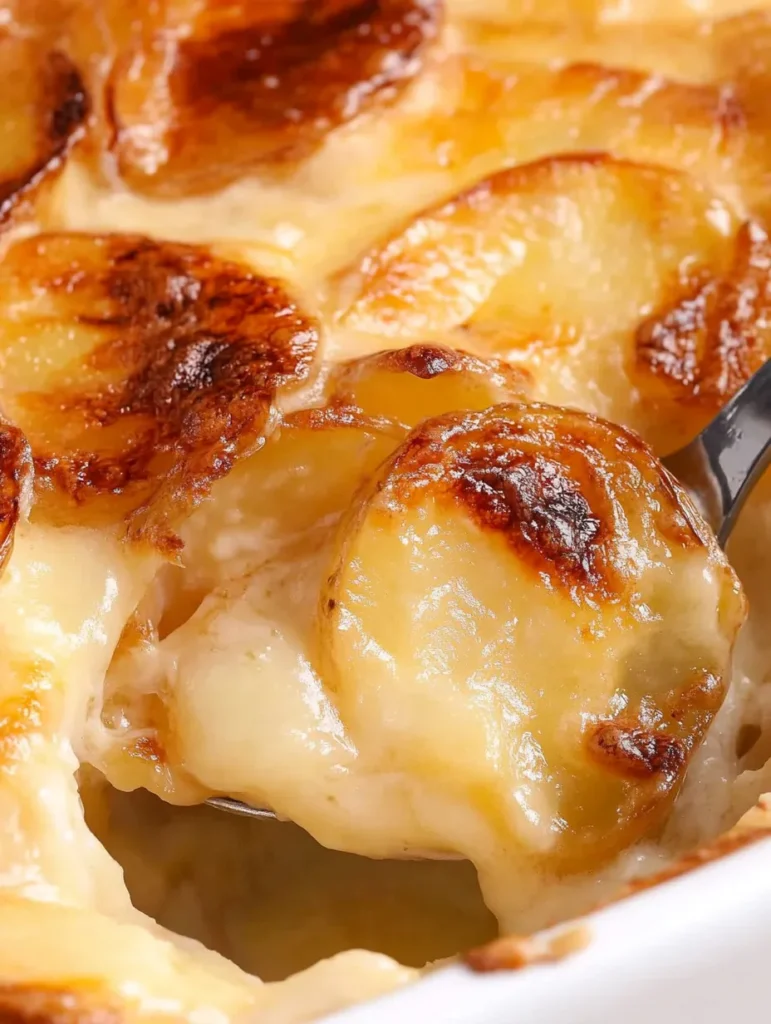
Exploring Swiss potato cuisine can be a real treat. The word for potato in Swiss German is Kartoffel. Knowing how to serve these dishes is essential for a true dining experience.
Traditional Swiss potato dishes are best when paired with the right ingredients. Here are some classic serving tips:
- Pair Rösti with crispy Bündnerfleisch (air-dried meat)
- Serve potato dishes alongside creamy Raclette cheese
- Accompany with traditional Swiss sausages
“The art of Swiss potato cuisine lies not just in cooking, but in thoughtful presentation.” – Swiss Culinary Tradition
Choosing the right drink can make your potato dish even better. Swiss white wines and local craft beers are great choices. Each region in Switzerland has its own favorite pairings.
To make your potato dish a full meal, add fresh herbs, pickled veggies, or a light salad. In Swiss German cuisine, how you present your dish is just as important as how you cook it.
Storage and Reheating Tips
Keeping your Swiss potato dishes tasty means storing and reheating them right. Whether it’s kartoffeln or rösti, keeping quality high is key.
Start with the right storage for Swiss potatoes. Leftovers need care to stay tasty.
Optimal Storage Methods
- Use airtight containers to prevent moisture buildup
- Store potato dishes in the refrigerator within two hours of cooking
- Separate layers with parchment paper to prevent sticking
- Keep refrigerated potatoes for maximum 3-4 days
Reheating Techniques
Reheating Swiss potatoes gently is important. Microwaves can make them soggy.
- Preheat oven to 350°F (175°C)
- Spread potatoes in a single layer on a baking sheet
- Cover with aluminum foil to prevent drying
- Heat for 10-15 minutes until warmed through
Quality Preservation Tips
The secret to great Swiss potato dishes is treating them with care, even after the initial cooking.
To stop potatoes from turning gray, add lemon juice or vinegar. For crispy dishes like rösti, reheat in a skillet with butter.
Follow these tips to keep your Swiss potato dishes delicious.
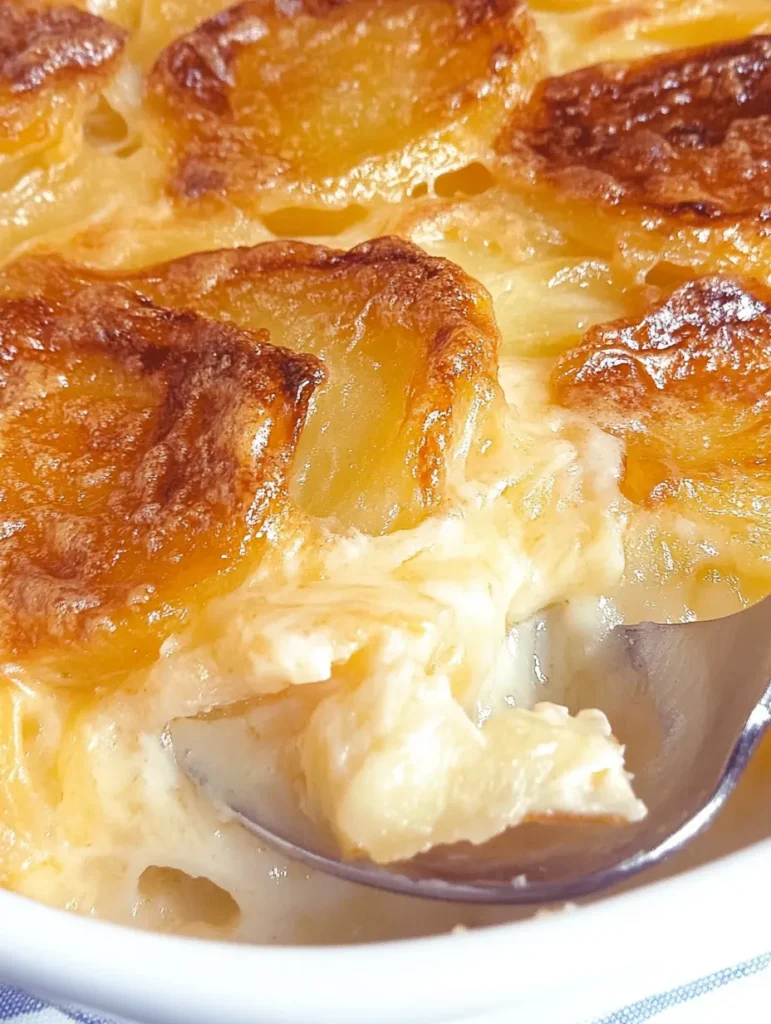
Conclusion
Your journey through Swiss potato cuisine shows why Switzerland is famous for potatoes. You’ve learned that potatoes are more than just side dishes. From crispy rösti to alpine cooking, you’ve discovered the secrets of Swiss potato cooking.
Now you know how to make these dishes at home. Is Switzerland known for potatoes? Yes! Each recipe shares stories of pride, heritage, and innovation. It turns simple potatoes into amazing meals.
You’re ready to try Swiss potato cooking with confidence. Whether it’s a traditional rösti or alpine-style dishes, you can bring Switzerland to your table. Your new skills celebrate a culinary tradition that delights people everywhere.
Mastering Swiss potato cuisine is about passion, precision, and respect for ingredients. Your culinary journey is just starting. You’re about to explore the delicious world of Swiss potato dishes.
FAQ
What is a rösti in Switzerland?
A rösti is a traditional Swiss potato dish from the Bern region. It’s made by grating potatoes and pressing them into a flat cake. Then, they’re fried until they’re golden and crispy.
Think of it as Switzerland’s version of a potato hash brown. But it’s more rustic and authentic, deeply rooted in Swiss culinary tradition.
Are potatoes really important in Swiss cuisine?
Absolutely! Potatoes are a big deal in Switzerland. They’re in everything from hearty Alpine dishes to sophisticated urban recipes. They reflect the country’s agricultural heritage and culinary creativity.
Dishes like rösti, Älplermagronen, and Kartoffelstock show how versatile potatoes are in Swiss cuisine.
What is “potato” in Swiss German?
In Swiss German, “potato” is called “Härdöpfel”. It’s pronounced roughly as “herd-op-fel”. This is different from standard German “Kartoffel”.
Each region might have slight variations in pronunciation. But Härdöpfel is widely used across German-speaking Swiss cantons.
Why are funeral potatoes called that?
Funeral potatoes aren’t actually from Switzerland. They came from Mormon communities in the United States. They were brought to gatherings after funerals.
The name comes from their popularity at post-funeral potlucks. While not Swiss in origin, they share similarities with potato dishes found in Alpine cuisine.
How difficult is it to make authentic Swiss rösti?
Making authentic rösti takes practice but isn’t hard. The key is using the right potatoes and grating them properly. You also need to master the technique for a crispy exterior and tender interior.
Traditional Swiss cooks often use day-old potatoes. They have specific techniques for achieving the perfect golden-brown crust.
Are Swiss potato dishes only served as side dishes?
Not at all! While many Swiss potato dishes like rösti are great as sides, they can also be main courses. Rösti can be topped with cheese, eggs, or meat to make a complete meal.
Other dishes like Älplermagronen (Alpine macaroni and cheese with potatoes) are hearty enough to be standalone meals. They show the versatility of potatoes in Swiss cuisine.
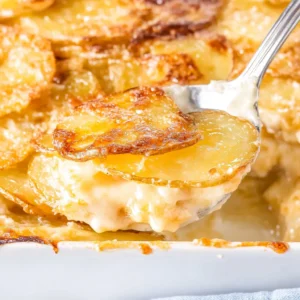
Swiss Potato Recipes
Ingredients
- 4 large Potatoes Waxy or all-purpose e.g., Yukon Gold
- 2 tbsp Butter Unsalted for frying
- 2 tbsp Vegetable Oil For frying
- 1 tsp Salt Adjust to taste
- 1/2 tsp Black Pepper Freshly ground
- 1 small Onion optional Finely chopped, for added flavor
Instructions
- Prepare Potatoes:
- Boil the potatoes in their skins the day before. Let them cool, then refrigerate overnight.
- Peel the potatoes and grate them using a box grater or food processor.
- Season Potatoes:
- In a large bowl, mix the grated potatoes with salt and pepper. Add chopped onion if using.
- Cook Rösti:
- Heat butter and oil in a large non-stick or cast-iron skillet over medium heat.
- Spread the grated potatoes evenly in the skillet, pressing them down with a spatula to form a compact cake.
- Cook for 10-12 minutes until the bottom is golden and crispy.
- Flip Rösti:
- Carefully flip the rösti using a large plate or lid. Slide it back into the skillet to cook the other side.
- Cook for another 10-12 minutes until golden and crispy.
- Serve:
- Slide the rösti onto a plate, cut into wedges, and serve hot.
Notes
- Potato Selection: Use waxy or all-purpose potatoes for the best texture. Avoid starchy varieties.
- Make-Ahead Tip: Boiling and refrigerating the potatoes overnight helps reduce moisture, making the rösti crispier.
- Serving Suggestions: Serve with fried eggs, bacon, or a dollop of sour cream for a hearty meal.
- Storage: Store leftovers in an airtight container in the fridge for up to 2 days. Reheat in a skillet to maintain crispiness.

